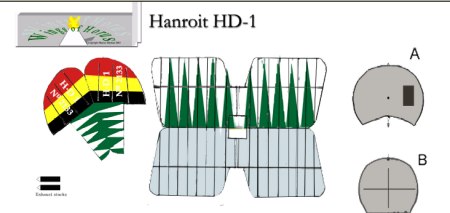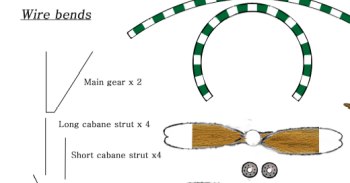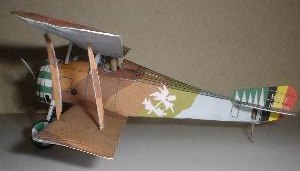| THE KIT |
This is the first really good look that I've gotten at a paper plane kit. I built some ships back when I was a wee lad (yeah, back before plastic was invented...), and recall using a lot of Elmer's glue. Well, things seem to have improved a great deal since then as this 'kit' looks a lot more like a stick and paper plane than anything else.
The folks at Wings of Horus offer a variety of paper plane models, but the way they provide them is a bit different. What you do, is choose what you want, then you can either download a free low resolution kit or fork out some funds for the higher resolution version. You can also purchase models to be mailed to you on a CD if you choose and that is what the Wings of Horus folks did for this review kit.
 The kit instructions provide a complete list of what you'll need in terms of materials and what weight of paper you need to print various parts of the instructions onto. A good ink-jet printer is all that is needed, preferably one with water proof ink so that the application of the PVA won't cause any problems.
The kit instructions provide a complete list of what you'll need in terms of materials and what weight of paper you need to print various parts of the instructions onto. A good ink-jet printer is all that is needed, preferably one with water proof ink so that the application of the PVA won't cause any problems.
 I've chosen the Hanriot HD-1 to use as an example of what these kits are like and have reproduced a small portion of the kit page. In addition to already being colored, the instructions provide jigs for making the wings and templates for the wire portions. Yes, wire is used to be covered by the paper parts. That is what gives portions of the model that are not self-supporting their strength.
I've chosen the Hanriot HD-1 to use as an example of what these kits are like and have reproduced a small portion of the kit page. In addition to already being colored, the instructions provide jigs for making the wings and templates for the wire portions. Yes, wire is used to be covered by the paper parts. That is what gives portions of the model that are not self-supporting their strength.
The website suggests doing these kinds of kits to help to relieve stress and to do  something that doesn't require one to get everything just right. Of course, you'll need intermediate modeling skills to do these kits as they are probably not suitable for beginners, but there are no worries over toxic glues, no resin, no painting, no photoetch and no hassles. What's more, if you run into problems, the website offers a step by step build guide, complete with photos. I've not seen any place where the atmosphere is more friendly and helpful; other than here, of course! :o)
something that doesn't require one to get everything just right. Of course, you'll need intermediate modeling skills to do these kits as they are probably not suitable for beginners, but there are no worries over toxic glues, no resin, no painting, no photoetch and no hassles. What's more, if you run into problems, the website offers a step by step build guide, complete with photos. I've not seen any place where the atmosphere is more friendly and helpful; other than here, of course! :o)
Just to show you that these kits really do look like what they are supposed to be, here is a photo I pinched from their website.
| CONCLUSIONS |
It looks like a great way to relax and to do something different. If you can read and follow instruction, and have the dexterity to operate scissors, then you may well want to give one of these kits a chance.
